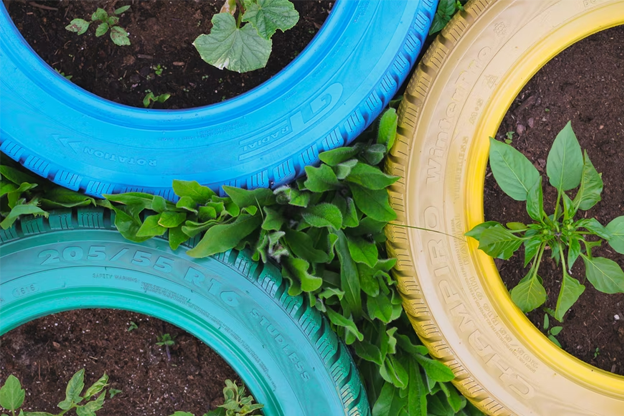Essential Steps For Your Home Gardening
Setting up a vegetable garden is easy, but it’s also a lot of work. You may have heard that you need to start seeds in order to grow a healthy garden. But the truth is, you can start your own garden with nothing but dirt!Saving money while getting close to nature is possible with indoor vegetable gardening.
For instance, a single tomato plant can be purchased for as little as $3 to $5 and produce up to 10 pounds of tomatoes throughout the growing season, saving you easily $20 or more compared to buying multiple plants. You can further reduce your costs by growing your favorite herbs, vegetables, and tomatoes from seeds.
Additionally, you’ll discover that garden-grown produce has an even better flavor and texture than what you’re used to buying at the supermarket. Additionally, maintaining food garden counts as exercise!
Check out these advice and techniques to start your vegetable garden off right.
Here are the essential steps you should take before you get started:
Start in a Compact Area
Start small if you’re new to gardening. It’s preferable to be delighted by the results of a little garden than to find a large one time-consuming. Before devoting a lot of time and money to your new interest, it’s also helpful to master a few gardening fundamentals. You’ll have a better idea of how long gardening takes. If you enjoy spending time outside planting, watering, and weeding, you’ll find out. Additionally, you’ll discover how much produce you and your family can consume in a summer.
A beginner’s vegetable garden should be 6×6 feet in size. Choose up to five different vegetable varieties to grow, and then plant a handful of each. You’ll have no trouble keeping up with the tasks, and you’ll have plenty of fresh vegetables for your summertime dinners. Another smart approach to start is to grow vegetables in containers. You don’t even need a yard with them; a sunny deck or balcony would do.
Grow The Foods You Enjoy
What do you enjoy eating? You’ll learn from your response what to grow in your food garden. When choosing what you want to produce, there are a few additional considerations to make.
Pick Your Varieties Wisely
Pay particular attention to the seed packet’s label, tag, or description. Each variety of vegetable comes with different properties. Some grow smaller plants appropriate for pots or small gardens. Other kinds have higher yields, better heat or cold tolerance, or better disease resistance. Start by picking vegetables you enjoy eating, and then research their sizes and maintenance requirements.
Productivity
Consider how much food you and your family will consume and whether you’ll be freezing, canning, or donating any extra produce. Then, be honest about how many seeds or plants you actually need to sow. Overplanting is a common error made by novices. You might not need many plants to meet your needs because vegetables like tomatoes, peppers, and squash continue to produce throughout the season. Other vegetables, like corn, radishes, and carrots, can only be harvested once before needing to be replanted.
Following Crops
You can gather vegetables and herbs continually through the spring, summer, and fall if you plant both warm- and cool-weather plants. Grow lettuce, greens (like arugula), peas, radishes, carrots, and broccoli in the early spring. Plant hot-weather favorites like tomatoes, peppers, eggplant, and herbs after harvesting your cool-weather crops, Kale, cabbage, and potatoes are all harvestable in the fall.
Test Garden Tip
By growing crops on vines, such as green beans and peas, you may maximize your garden’s vertical area and increase your yield per square foot.
Select a Location for Your Garden
There are two fundamental conditions that your site must meet for the maximum success: water and light, regardless of where you decide to put your garden or what you intend to plant.
A Lot of Sunlight is Essential.
Vegetables, like other plants, rely on the sun to initiate photosynthesis. Vegetables that grow quickly require direct sunlight. Vegetables that develop quickly require full sun—at least 6 to 8 hours each day of direct sunlight—without obstruction from trees, shrubs, or fences. Planting veggies that prefer the sun in areas that receive little sunlight won’t be very successful. Plant vegetables and herbs that can withstand partial shadow in your yard, such as lettuce, kale, chard, spinach, chives, cilantro, parsley, and thyme, carrots, a root vegetable.
Consider Having Easy Access to Water
The more conveniently your plot may be placed near a water source, the better. For these delicate plants to develop sturdy roots and stems during the first few weeks after seeds germinate or seedlings are transplanted, you’ll need to be able to water often. Once your plants have taken root, giving your garden a long drink every few days is preferable to a light sprinkle each day. The water will then penetrate the soil more deeply, which fosters root growth and allows them to more easily get the nutrients they require to be healthy. To assist reduce water loss and the amount of time you need to spend watering, think about installing soaker homes or drip irrigation on a timer.
Make A Plan For Your Vegetable Garden
When deciding on the layout of your vegetable garden, decide between row cropping and intensive cropping—each has advantages!
Cropping Rows
Plants should be arranged in rows of one, spaced at least 18 inches apart to allow for easy walking between them. Large vegetable gardens benefit the most from this strategy since rows make it simpler to employ mechanical weeding tools like tillers. The disadvantage is that you can plant fewer veggies because space designated for pathways is limited.
Test Garden Tip
The north side of the garden typically works best for tall plants. This includes naturally tall plants like peas, cucumbers, and beans that can be grown on vertical supports. Make your own A-frame to save money.
Cropping Intensive
Increase the output of your garden by using intense cropping, which is placing two or three plants closely together in a bed that is around 4 feet wide (aka a wide row). In order for their leaves to barely touch when mature, seeds are sowed or transplants are planted in this manner. With the exception of plants that vine, like cucumbers, this method, which utilizes nearly every square inch of the prepared soil, works well for most types of vegetables. Because the plants grow so closely together, this method has the drawback that you must weed by hand.






